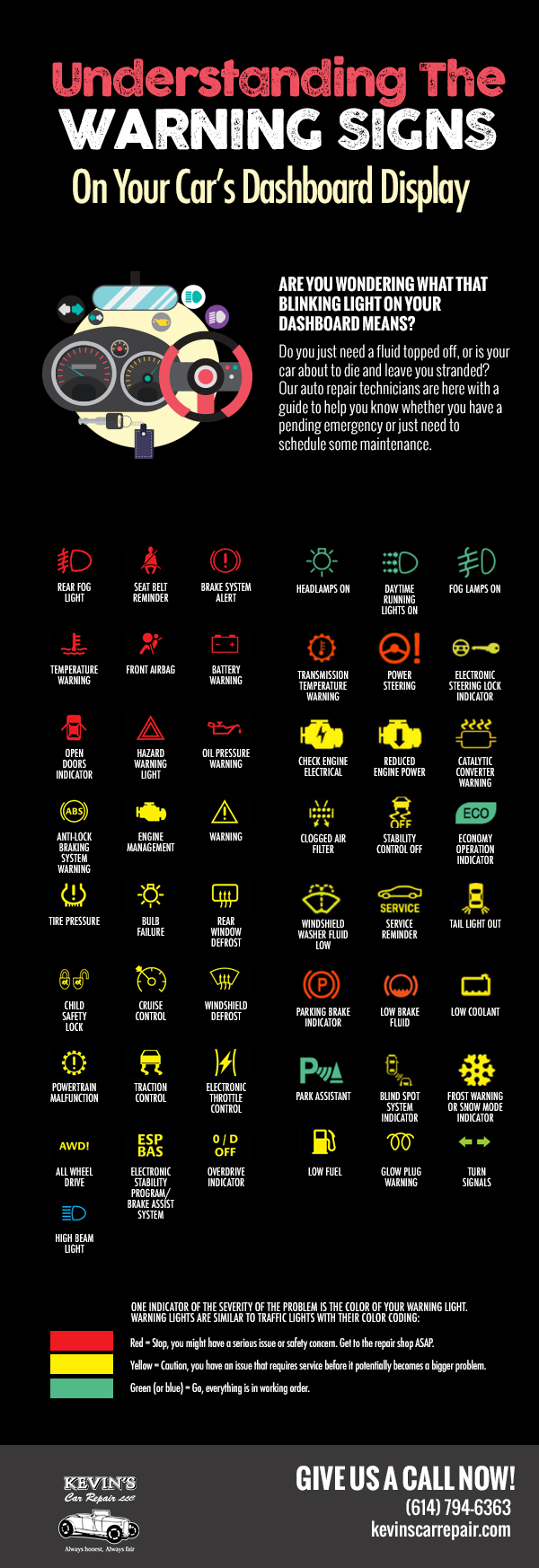Interpreting Your Car'S Alert Lighting: Their Real Effects
Interpreting Your Car'S Alert Lighting: Their Real Effects
Blog Article
Team Author-Higgins Dalgaard
When you're behind the wheel, those radiant warning lights on your dashboard can be a little bit complicated. Do you know what they're attempting to tell you concerning your vehicle's health and wellness? Recognizing the relevance of these lights is essential for your security and the long life of your vehicle. So, the following time among those lights appears, would not you want to decipher its message properly and take the needed actions to address it?
Common Warning Lighting and Interpretations
Identify typical warning lights in your cars and truck and recognize their definitions to make sure risk-free driving.
https://www.clarksvilleonline.com/2021/11/07/list-of-car-repairs-that-should-not-be-tried-at-home/ include the check engine light, which signifies problems with the engine or discharges system. If this light begins, it's important to have your lorry examined immediately.
The oil stress alerting light shows reduced oil stress, needing prompt focus to stop engine damages.
A blinking battery light could recommend a damaged charging system, potentially leaving you stranded if not attended to.
The tire stress tracking system (TPMS) light alerts you to low tire stress, affecting automobile stability and fuel performance. Disregarding this might result in unsafe driving problems.
The ABS light indicates a trouble with the anti-lock braking system, endangering your capability to stop swiftly in emergencies.
Last but not least, the coolant temperature advising light warns of engine getting too hot, which can lead to severe damages otherwise resolved swiftly.
Comprehending these typical warning lights will certainly assist you deal with problems without delay and preserve secure driving conditions.
Importance of Prompt Interest
Understanding the common warning lights in your car is only the initial step; the significance of immediately addressing these cautions can not be highlighted enough to ensure your safety and security when traveling.
When a warning light illuminates on your dashboard, it's your car's way of communicating a prospective concern that requires attention. Neglecting these cautions can bring about a lot more serious issues in the future, jeopardizing your security and possibly costing you extra in repairs.
Trigger focus to cautioning lights can stop breakdowns and mishaps. For instance, a flashing check engine light might indicate a misfire that, if left unattended, can trigger damages to the catalytic converter. Resolving this without delay can conserve you from a costly fixing.
Similarly, a brake system alerting light might signal low brake fluid or worn brake pads, vital elements for your safety when driving.
DIY Troubleshooting Tips
If you discover a warning light on your control panel, there are a few DIY troubleshooting suggestions you can try before seeking professional help.
The primary step is to consult your automobile's handbook to understand what the particular caution light suggests. Sometimes https://oil-near-me51738.loginblogin.com/38126691/steps-to-uncover-a-trustworthy-auto-repair-shop-in-your-region can be as straightforward as a loosened gas cap setting off the check engine light. Tightening up the gas cap might fix the problem.
carcleaning is a reduced battery, which can cause numerous advising lights. Checking the battery connections for rust and guaranteeing they're protected might deal with the trouble.
If a warning light continues, you can attempt resetting it by disconnecting the vehicle's battery for a couple of minutes and afterwards reconnecting it. In addition, examining your lorry's liquid levels, such as oil, coolant, and brake liquid, can help repair warning lights related to these systems.
Final thought
To conclude, understanding your cars and truck's warning lights is essential for keeping your vehicle running smoothly and safely. By promptly addressing these informs and knowing what they suggest, you can avoid costly repair work and prospective break downs.
Remember to consult your auto's guidebook for certain information on each alerting light and take action accordingly to guarantee a trouble-free driving experience.
Remain notified, stay risk-free when driving!
